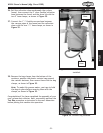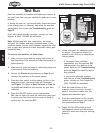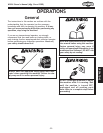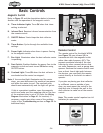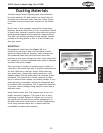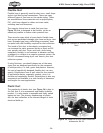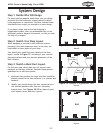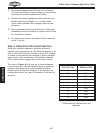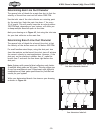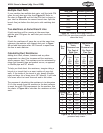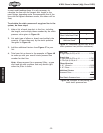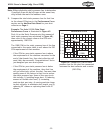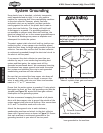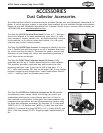
-28-
W1816 Owner's Manual (Mfg. Since 10/09)
OPERATIONS
3. Directional changes should be kept to a minimum.
The more directional change fittings you use directly
increases the overall resistance to airflow.
4. Gradual directional changes are more efficient than
sudden directional changes (i.e. use the largest
corner radius possible when changing hose or pipe
direction).
5. Each individual branch line should have a blast gate
immediately after the branch to control suction from
one machine to another.
6. The simpler the system, the more efficient and less
costly it will be.
Step 4: Determine CFM of Each Machine
Since each machine produces a different amount of
sawdust, the requirements for the minimum amount of air
flow or CFM (cubic feet per minute) to move that sawdust
is unique to the machine (for example, a planer produces
more sawdust than a table saw). Knowing this required
CFM is important to gauging which size of duct to use.
The chart in Figure 40 will give you a close estimation
of the airflow your machine requires. Keep in mind that
machines that generate the most sawdust should be
placed closest to the dust collector. If the machine has
multiple dust ports, the total CFM required is the sum of
all ports.
Machine
Dust Port Size
Approximate
Required CFM
2" 98
2.5" 150
3" 220
4" 395
5" 614
6" 884
7" 1203
8" 1570
9" 1990
10" 2456
Figure 40. Approximate required airflow
(CFM) based on machine dust port
diameter.




